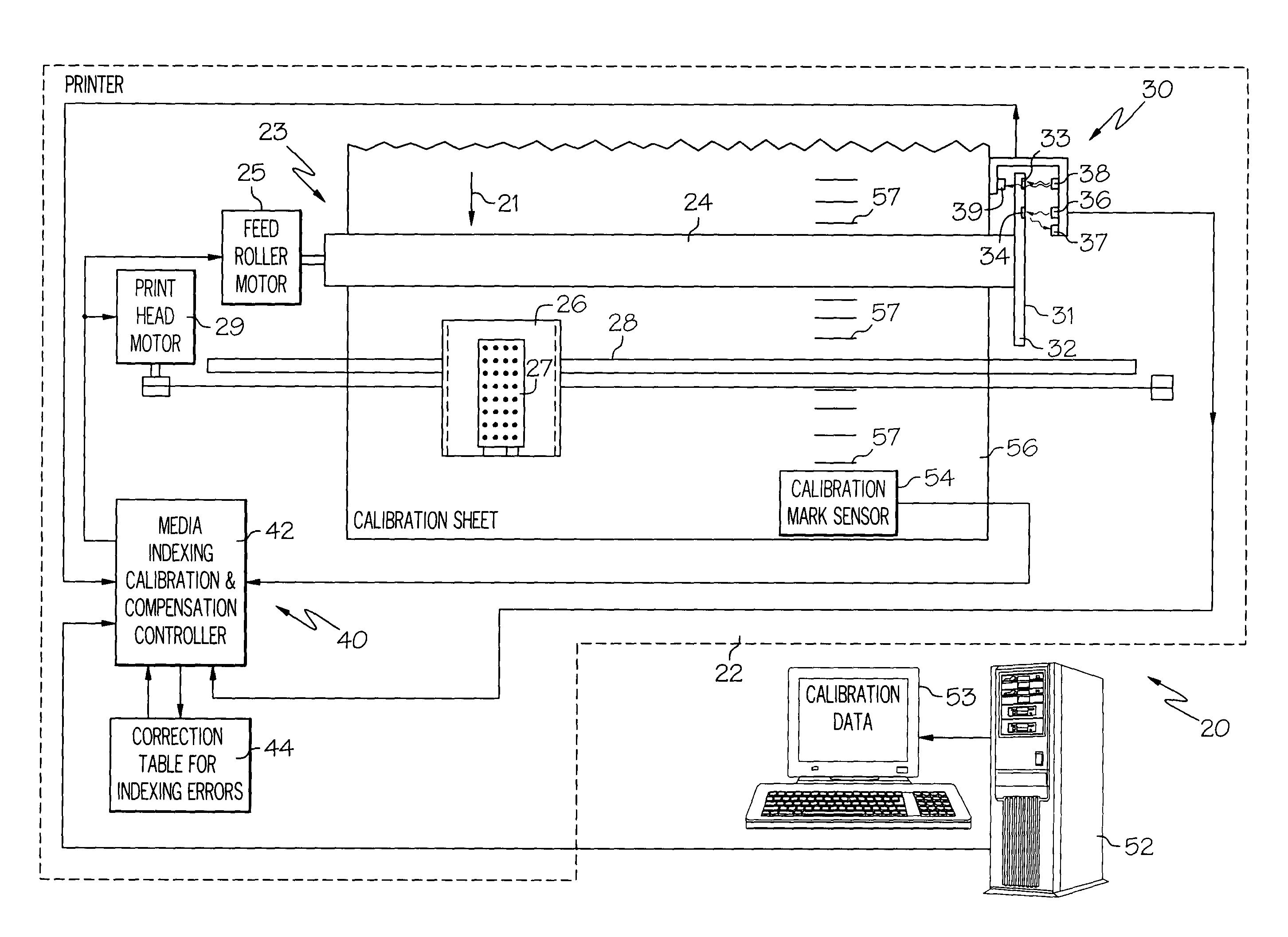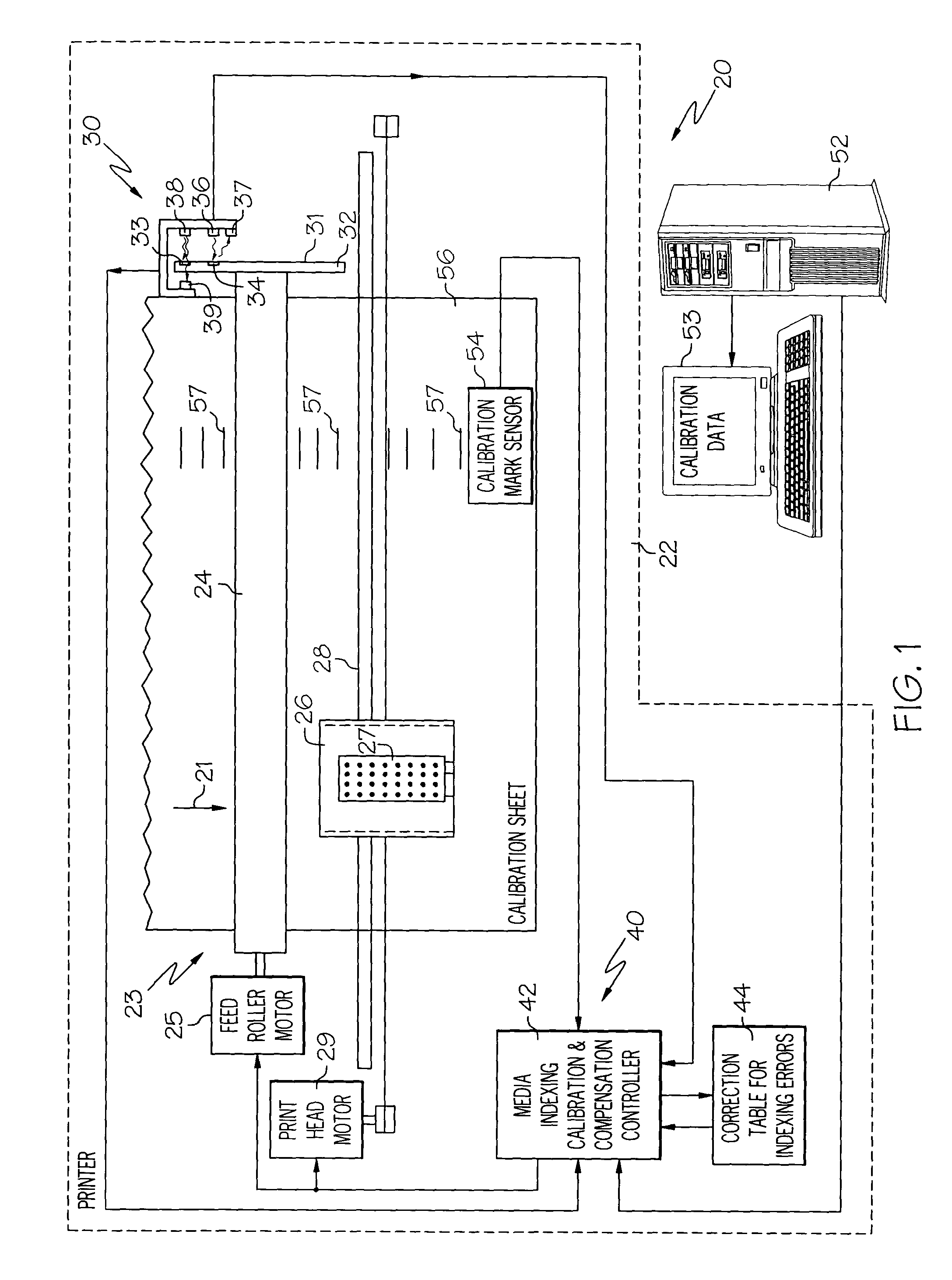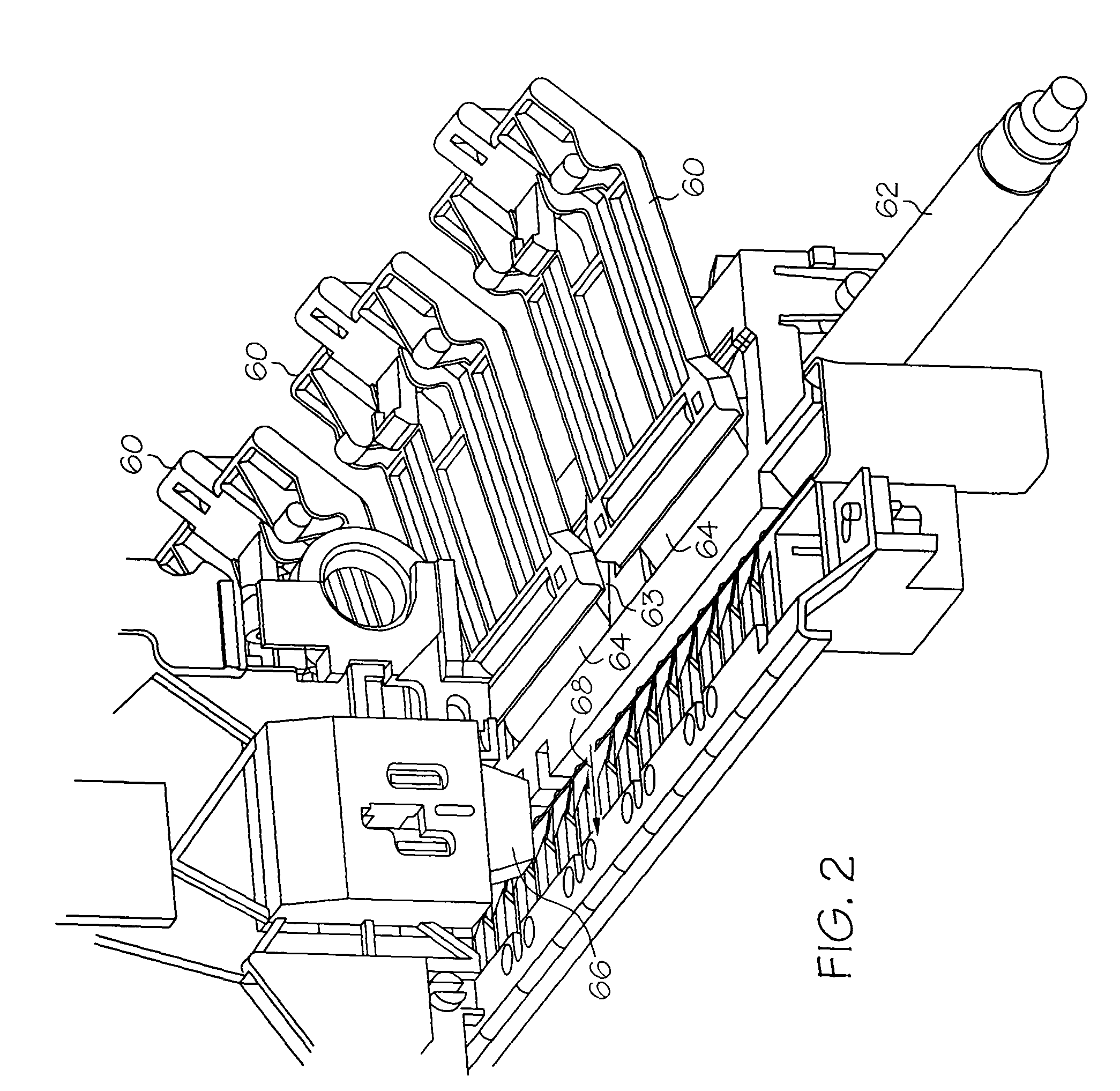Methods and systems to calibrate media indexing errors in a printing device
a printing device and media indexing technology, applied in the field of printing devices, can solve the problems of cumulative feedrate errors, deviation of actual feedroller diameter from ideal feedroller diameter, so as to improve the accuracy of media indexing with efficiency and without high cost
- Summary
- Abstract
- Description
- Claims
- Application Information
AI Technical Summary
Benefits of technology
Problems solved by technology
Method used
Image
Examples
Embodiment Construction
[0035]Aspects and principles of the present inventions will now be described relative to various illustrative embodiments. Some such embodiments relate to improved media indexing in printing devices, such as printers, and in particular to improved systems and methods for calibration of media indexing errors and compensation of such errors during printing. In some embodiments, error data is derived based upon the actual positions of the media and the expected positions of the media and the parameters of a line that best fits the error data are calculated. The parameters of the line can then be used to determine a feedrate compensation factor which can be stored for use in compensating for cumulative errors during printing. The parameters of a periodic function that best fits the periodic component of the error data can also be determined and used for compensation of recurring errors (i.e., eccentricity or once-per-revolution errors) during media indexing.
[0036]In some embodiments, it...
PUM
 Login to View More
Login to View More Abstract
Description
Claims
Application Information
 Login to View More
Login to View More - R&D
- Intellectual Property
- Life Sciences
- Materials
- Tech Scout
- Unparalleled Data Quality
- Higher Quality Content
- 60% Fewer Hallucinations
Browse by: Latest US Patents, China's latest patents, Technical Efficacy Thesaurus, Application Domain, Technology Topic, Popular Technical Reports.
© 2025 PatSnap. All rights reserved.Legal|Privacy policy|Modern Slavery Act Transparency Statement|Sitemap|About US| Contact US: help@patsnap.com



